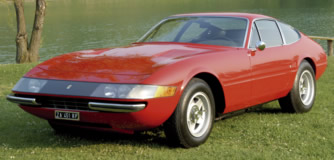|
However, the unofficial name has stuck, and continues to be widely used today. This was the last new 12-cylinder Ferrari model announced before Fiat took over control of road car production in 1969, when they
purchased 40 per cent of the share capital, with a further 49 per cent passing to them upon the death of Enzo Ferrari. It was also the last 12-cylinder Ferrari to be sold new in the USA (through official channels) until 1984,
when the Testarossa was announced. This was due to the high cost for a low volume manufacturer of meeting increasingly strict legislative requirements.
Early prototype examples featured a nose style based on that of the
outgoing 275 GTB4 model, but the definitive style was a radically different and more angular wedge design, featuring a full width Plexiglass strip behind which were mounted a twin headlight assembly at each side, running into
the wing sides with the side/turn indicator units. In 1971 this lighting arrangement was superseded by a twin retractable system, as changes in USA legislation did not permit headlights behind covers. As this model had been
designed from the outset to comply with US legislation, due to the importance of sales in that market, the alteration had to be made. An alternative of fixed open headlights had been tried, but this upset the clean shape of the
nose, whilst the retractable solution meant that the original profile would be retained, except when the lights were in use.
The 365 GTB4 was even more aggressive in appearance than its predecessor, with the long, wide,
and sharp, almost shark-like sweeping nose, with a large expanse of bonnet with twin rectangular exhaust air slots, running into the set-back cabin section, that flowed straight into the abrupt angled Kamm tail, on which were
mounted a pair of twin circular light units above each quarter bumper. The body was designed by Pininfarina, and constructed by Scaglietti, normally in steel with aluminium doors, bonnet, and boot lid, although later in the
production run the doors were changed to steel, and bracing struts provided within them for USA market examples, once again due to changes in legislative requirements. The cabin was a five-window design with a large lightly
curved windscreen and an almost flat rear screen bounded by sail panels that ran in a continuous line into the tail panel. The body featured a semi circular indent line, that ran around the perimeter halfway up the body side
from the trailing edge of the front wheelarches, a design feature that would appear on later 2+2 models, and in a different guise on future mid-engined models. Almost a year after its introduction a spider version, the 365
GTS4, was announced at the 1969 Frankfurt Show, which was visually identical from the waist down, only the folding roof and boot profile being different. The spider version proved to be extremely popular, particularly in the
American market, and from the time of its introduction accounted for about 10 per cent of 365 GTB4 model sales. Since then a number of berlinettas have had the roof cut off to be converted to the spider variant, this vogue
being particularly popular in the late 1980s. Both variants of the model were produced up until 1973 which, by the standards of previous models, was a lengthy run, with 1284 berlinettas and 122 spiders produced. At the 1969
Paris Salon a one off "speciale" coupé, chassis no. 14547, was shown by Pininfarina, which featured a stainless steel roll hoop, and a zip out rear window, although the roof section was a fixed panel.
The
bodies were mounted on a 2400mm wheelbase chassis which had factory reference numbers 605, and all were numbered in the odd chassis number road car sequence. The construction was along the same basic lines as the others of the
period, with large-section oval main tubes, cross bracing, and sub structures to support the body and ancillary equipment. The model was available in right-or left-hand drive form. The standard road wheels were five spoke
"star" pattern alloy, with a knock-off spinner on a Rudge hub, although the American, and certain other market cars, had a large central nut due to legislative requirements. The option of Borrani wire wheels was
available throughout the production period.
The engine was an increased-capacity, longer-block derivation of the twin overhead camshaft per bank V12 unit used in the 275 GTB4, with factory type reference 251, of 4390cc
capacity, with a bore and stroke of 81mm x 71mm, and like that engine featured dry sump lubrication. It was fitted with a bank of six twin-choke Weber 40 DCN20 or 21 carburettors, those of the USA market cars carrying the
suffix "A", with a twin coil and rear-of-engine mounted distributors and ignition system, with an electronic system fitted to USA market versions, to produce a claimed 352hp. The USA market cars were also fitted with
a number of devices to control exhaust gas emissions, including a fast idle device, and an exhaust manifold air injection system. The engine drove through a flywheel-mounted clutch, via a shaft running at engine speed in a
torque tube, to a five-speed transaxle mounted similarly to that of the 275 GTB4 model, and then by drive shafts to the independently suspended rear wheels, with wishbones, coil spring and hydraulic shock absorbers to each
wheel.
Apart from the standard road cars, there were three series of five client competition examples built at the factory's "Assistenza Clienti" department in Modena, along with an earlier one-off
all-aluminium bodied car for Luigi Chinetti's North American Racing Team. The first series of five competition examples, built in 1971, had all aluminium bodies. They featured slightly flared wheelarches with wider wheels,
aerodynamic "fences" on the front wings, a small chin spoiler, and a lack of quarter bumpers, as the main identifying features. The second series, produced in early 1972, had steel bodies with the aluminium bonnet,
boot lid, and doors of the road cars, but with much increased flares to the wheelarches, to accommodate even wider wheels and tyres. The third series, produced in early 1973, were visually very similar to the series II cars,
but had steel doors, with only the bonnet and boot lid in aluminium. They received carefully built and balanced engines to racing standards, and some performance details were enhanced by the homologation of special parts over
the period of production.
These competition examples proved to be very successful in the GT category, not only due to their power, but also reliability, in endurance events. At the Le Mans 24-Hour Race in 1972 they
filled the top five positions in their class, repeating the class wins there in 1973 and 1974. As late as 1979, they were still performing credibly with a second overall in the Daytona 24-Hour Race, a great result for a car
that had been out of production for six years.
The 30 September 1971 issue of the British magazine Autocar featured a road test, where they recorded a 0-60 mph time of 5.4 seconds, a 0-100 mph time of 12.6 seconds, a
standing start quarter mile time of 13.4 seconds at a terminal velocity of 104 mph, and a top speed of 174 mph, a figure that remained as their road test record for a number of years. The November 1974 issue of the American
magazine Road & Track featured a track test of a competition version, recording the following times, a 0-60 mph time of 5.8 seconds, a 0-100 mph time of 12.6 seconds, a standing start quarter mile time of 14.5 seconds at a
terminal speed of 107.5 mph, and a top speed of 186 mph, which were not vastly different to the figures recorded by the British magazine Autocar for the standard road version. However, an improvement in lap times on a race
track would come about through the stiffer suspension, wider wheels and racing tyres of the competition model, but it also serves to show how good the performance of the standard car was.
Engine
- Type front, longitudinal 60° V12
- Bore/stroke 81 x 71 mm
- Unitary displacement 365.86 cc
- Total displacement 4390.35 cc
- Compression ratio 8.8 : 1
- Maximum power 259 kW (352 hp) at 7500 rpm
- Power per litre 80 hp/l
- Maximum torque 431 Nm (44 kgm) at 5500 rpm
- Valve actuation twin overhead camshafts per bank, two valves per cylinder
- Fuel feed six Weber 40 DCN 20 carburettors
- Ignition single spark plug per cylinder, two coils
- Lubrication dry sump
- Clutch single-plate
Chassis
- Frame tubular steel
- Front suspension independent, unequal-length wishbones, coil springs over telescopic shock absorbers, anti-roll bar
- Rear suspension independent, unequal-length wishbones, coil springs over telescopic shock absorbers, anti-roll bar
- Brakes discs
- Transmission 5-speed + reverse
- Steering worm and roller
- Fuel tank capacity 128 litres
- Front tyres 215/70 VR 15
- Rear tyres 215/70 VR 15
Bodywork
- Type two-seater berlinetta
- Length 4425 mm
- Width 1760 mm
- Height 1245 mm
- Wheelbase 2400 mm
- Front track 1440 mm
- Rear track 1453 mm
- Weight 1200 kg (dry)
Performance
- Top speed 280 km/h
- Acceleration 0-1000 m 24 sec
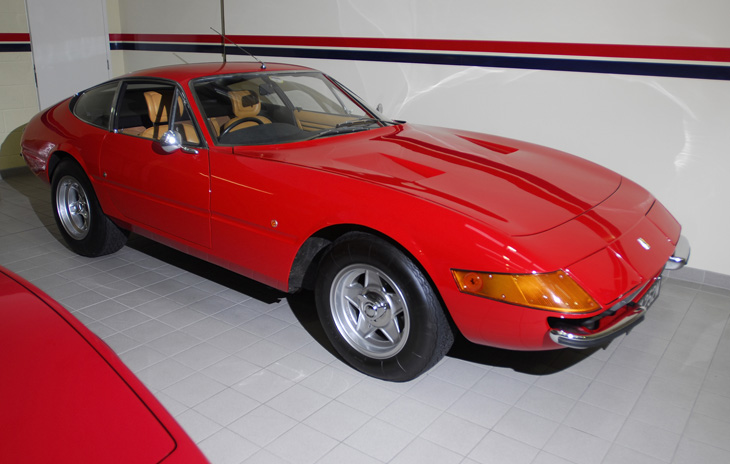
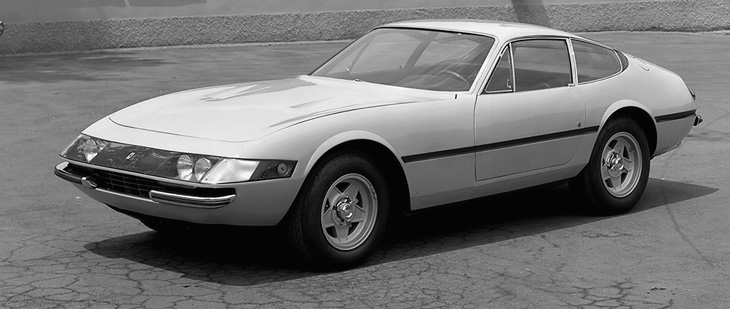
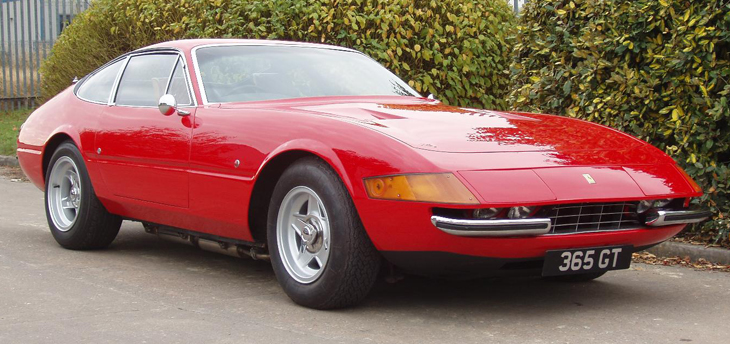
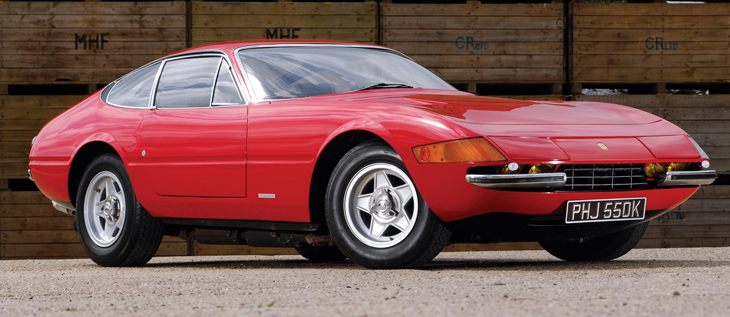
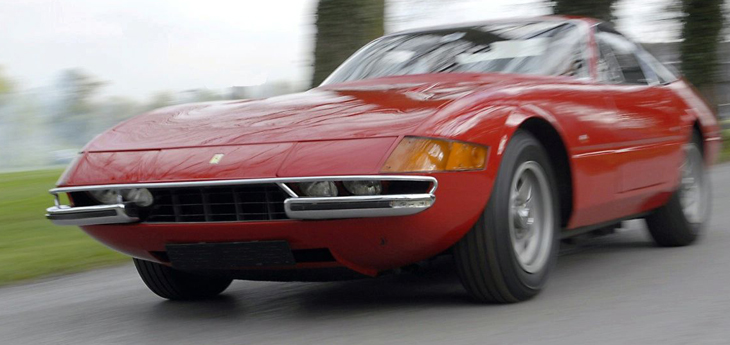
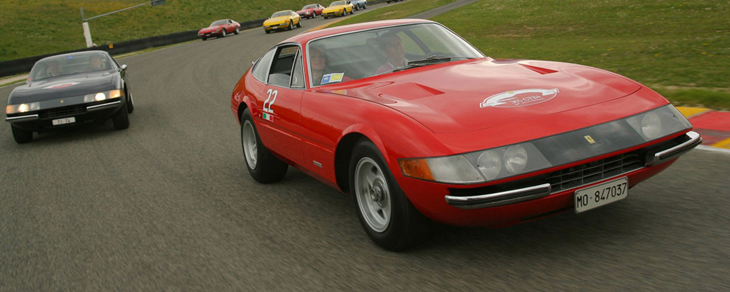
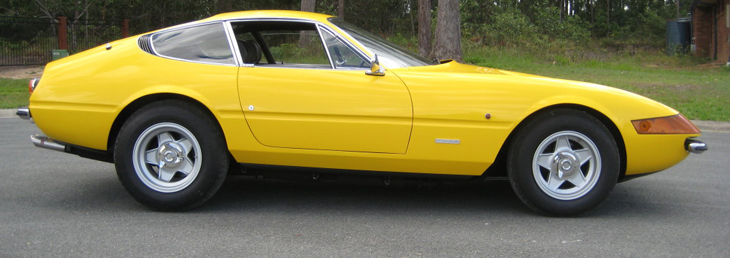
|
